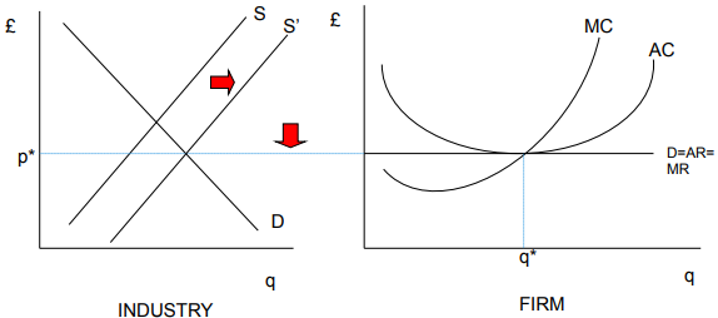Perfect Competition
1/10
There's no tags or description
Looks like no tags are added yet.
Name | Mastery | Learn | Test | Matching | Spaced |
|---|
No study sessions yet.
11 Terms
Assumptions for Perfect Competition
The market has many buyers and many sellers
Homogeneity of output – firms produce identical products
The multiplicity of sellers of identical goods means that no one firm has power to determine the price – so firms are price takers
No barriers to entry or exit
Perfect information and low transaction cost
Perfect Competition: Short Run
The amount of capital employed (and so also the number of firms) is fixed
Profit Maximisation Equations
Total revenue = price x quantity sold
TR = pq
Average revenue = total revenue / quantity sold = price
AR = TR/q = p
A firm’s marginal revenue is the additional revenue from selling one additional unit of output
Marginal revenue = the rate of change (derivative) of total revenue with respect to quantity sold
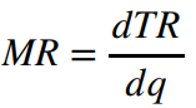
Profit Maximisation
In a perfectly competitive market, the profit maximising output level occurs where p=MC
Profit is maximised where marginal cost cuts marginal revenue from below. Below q*, adding units of output adds more to revenue than to cost. Above q* more is added to cost than to revenue
The shaded area is supernormal profit: total revenue (AR x q*) minus total costs (AC x q*) (p = TR – TC)
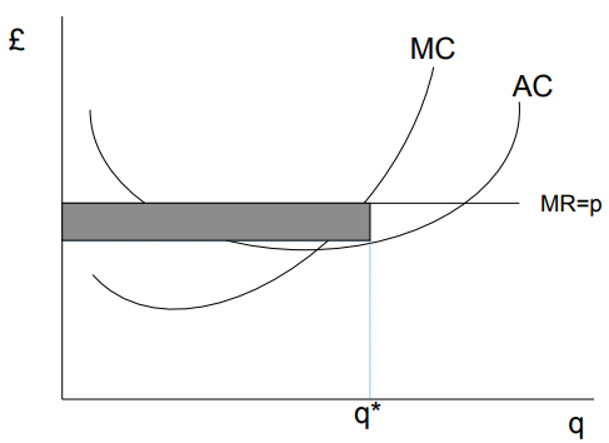
Short Run Shut Down Condition
If operate: profit=TR-TC=TR-FC-VC
If shutdown: profit=0-FC-0
As long as TR covers the VC (that is p ≥ AVC), the firm should keep operating
Shutdown if p < AVC
In the short run, a firm may continue production even if it is making a loss – so long as it is covering its variable costs. This has the effect of minimising the losses
Industry Supply Curve
The industry supply curve is the horizontal sum of individual firms supply curves
Must just sell same product - don't need same equations
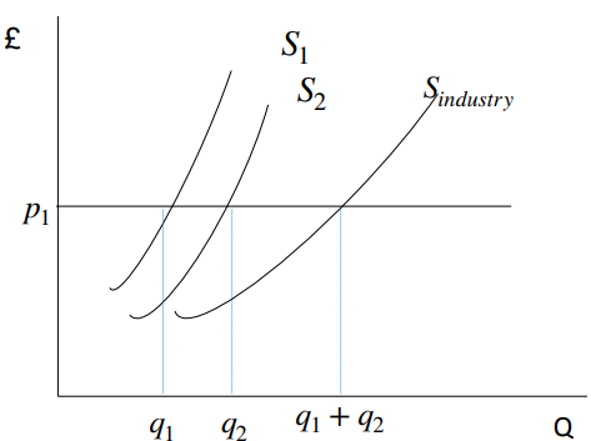
Short Run Market Equilibrium
Profit is maximised where marginal cost cuts marginal revenue from below. Below q*, adding units of output adds more to revenue than to cost. Above q* more is added to cost than to revenue

Free Entry
the ability of a firm to enter an industry without encountering legal or technical barrier
Long Run Competitive Equilibrium
occurs at the point where the market price is equal to the minimum average total cost
the firms earn zero economic profit (considering opportunity cost)
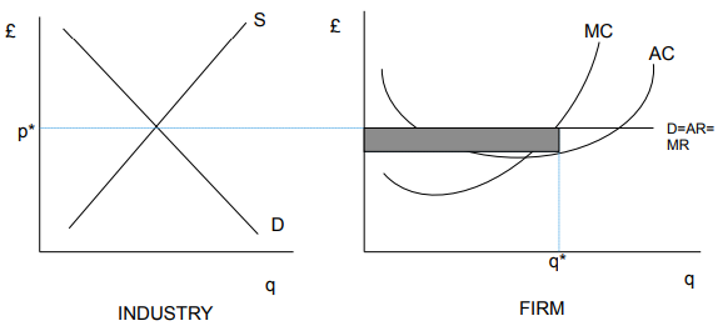
Supernormal Profit
attracts new entrants into the industry
supply (at industry level) increases, pushing the price down – thus shifting the demand curve faced by individual firms down
results in a decrease in price, profit decreases for the firm
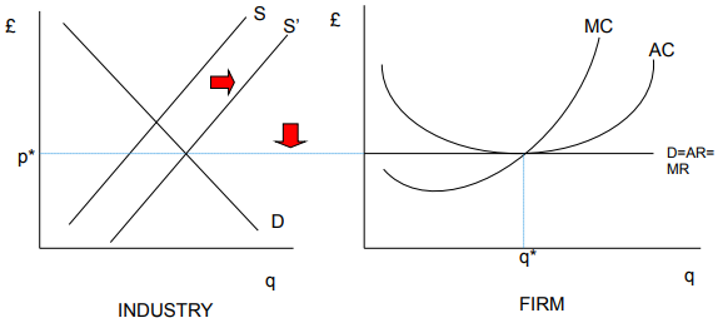
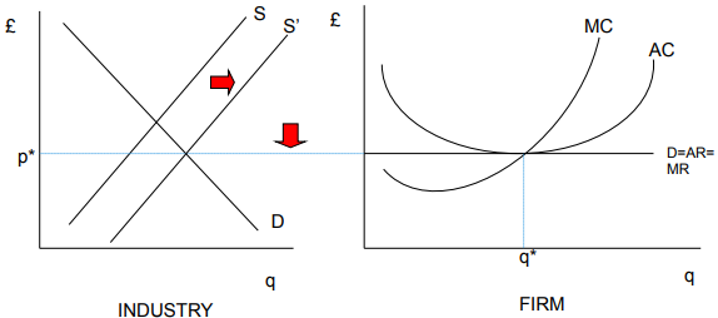
What is happening in this Graph?
no further supernormal profits are made. At this point there is no incentive for further new entry, and so the industry is in long run equilibrium. Note that in this equilibrium each firm produces output at minimum average cost – and so we have allocative efficiency. This makes perfect competition a good benchmark.
Firms make 0 profit
